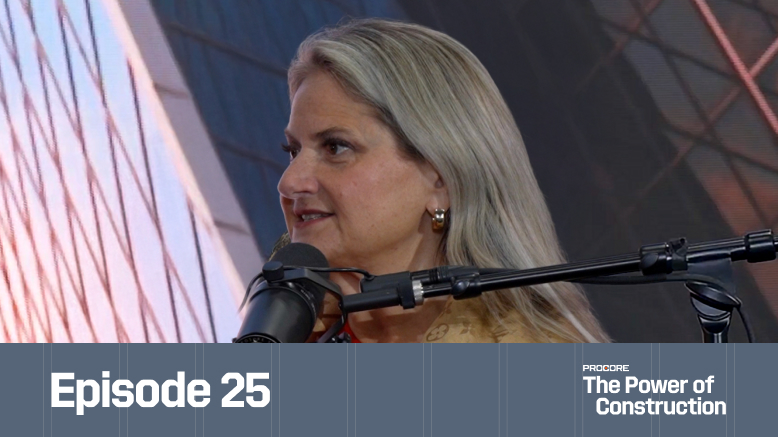— 6 min read
The Importance of Subcontractor Prequalification

Last Updated Jun 11, 2024

Daniel Gray
Contributing Writer
32 articles
Daniel is an educator and writer with a speciality in construction. He has been writing construction content for Procore since 2022, and previously served as a Procore Content Manager before continuing to pursue an education career as an Assistant Headmaster for Valor Education in Austin. Daniel's experience writing for construction — as well as several clients under an agency — has broadened his knowledge and expertise across multiple subjects.

Nathaniel Dobbs
Senior Solutions Overlay
Nathaniel Dobbs is a construction professional with a degree in Construction Engineering & Management. With 8 years of experience in the construction industry, he has held various roles, including Project Engineer, Project Superintendent, and Project Manager working on both commercial and residential projects. He now works as a Solutions Engineer at Procore, where he utilizes his construction expertise to enhance software solutions for project management and quality control.
Last Updated Jun 11, 2024

For general contractors, prequalifying subcontractors helps identify reliable, skilled, and financially stable specialty contractors. The prequalification process typically involves collecting information about a subcontractor’s financial health, safety record, and project experience. A rigorous prequalification process can help general contractors minimize project delays, decrease cost overruns, and mitigate safety risks.
Most general contractors do not self-perform much (or any) of the construction work on their projects, which means that most of that work will be completed by specialty contractors. In other words, the project’s success can depend heavily on the quality of subcontractors the GC selects for the project. In order for a contractor to maintain their reputation, they’ll need to identify subcontractors that are able to reliably produce quality work for a specific project. In most cases, that means that general contractors use a subcontractor prequalification process and maintain a list of trusted specialty contractors.
This blog post will describe the subcontractor prequalification process and its importance, and give insights on improving prequalification strategies.
Table of contents
Why is it important to prequalify subcontractors?
Prequalifying subcontractors serves as a critical safeguard for both project owners and general contractors. By meticulously vetting subcontractors, general contractors can assemble a team of skilled and reliable professionals who are aligned with the project’s goals, ultimately building trust with the project owner. Here are the key reasons that successful contractors have a thorough prequalification process:
- Ensure quality workmanship: Selecting subcontractors with a history of delivering high-quality work on similar projects increases the likelihood of a well-executed project.
- Reduce project delays: Prequalified subcontractors are more likely to have the capacity to adhere to project timelines, reducing the chance that delays will impact overall project success.
- Preserve financial stability: Evaluating subcontractors’ financial health helps avoid potential bankruptcy or cash flow issues that could disrupt the project.
- Maintain safety standards: Prioritizing subcontractors with strong safety records reduces the likelihood of accidents and promotes a safe working environment.
- Comply with laws and regulations: Prequalifying subcontractors ensures that they have the necessary licenses and certifications to adhere to industry standards and applicable legislation.
A comprehensive evaluation process helps to mitigate risks caused by project delays, cost overruns, and safety incidents. By identifying expert subcontractors with a proven track record of both financial stability and strong safety, general contractors can minimize potential issues and pave the way for a successful construction project.
Stay updated on what’s happening in construction.
Subscribe to Blueprint, Procore’s free construction newsletter, to get content from industry experts delivered straight to your inbox.

Components of a high-quality prequalification application
A general contractor’s first and most important step in prequalification is putting together a detailed prequalification application for subcontractors. That way, GCs can compile information about potential partners on projects in a standardized format and easily compare applicants.
In putting together a prequalification form, general contractors aim to understand more about a subcontractor’s reputation, financial health, and ability to complete projects of a particular size, complexity, location, and duration.
Below, we’ve compiled the most important information that GCs should ensure they collect as part of their subcontractor prequalification process.
| Category | Description |
| Basic details | Basic company information, including name, address, contact information, year founded, and regions where they perform work |
| Licensing and unions | Details about trade licenses, including issuing state, certifying agency, license number, and expiration date, as well as union affiliations |
| Insurance | Name of insurance brokerage, expiration for general liability insurance, and requirements related to aggregate and per occurrence policy limits or specific endorsements |
| Surety | Name of surety company, bonding capacity, outstanding bond commitments, and single project bond limit |
| Safety | Company safety record, including OSHA incident rates, EMR rating, safety policies and procedures, and any safety awards or recognition received |
| Finances | Financial statements (preferably third-party audited), credit reports, bank or bonding company references, lines of credit, fiscal year dates |
| Project history | List of relevant project experience, annual project sales volume, average and largest project sizes, percentage of sales volume self-performed |
| Litigation | Current litigation with owners or general contractors and history of legal disputes, liquidated damages, labor law violations, defaults, terminations, suspended licenses, corruption, and judgments |
| Capacity | Workforce and availability, subcontractor usage, work in progress, backlog |
The above items help general contractors paint a complete picture of a subcontractor’s finances, safety record, project expertise, and capacity for future projects.
Additional documentation is an important aspect of the prequalification application, as general contractors can use this information to reinforce claims made by the specialty contractor in their application. For example, a GC might request:
- IRS tax forms, like a W–9, which provides a company’s tax identification number
- OSHA 300A, which summarizes work-related injuries and illnesses
- Experience Modification Rate (EMR) worksheets, which shows a company’s worker’s compensation adjustment based on safety record
- Sample Certificate of Insurance (COI), which provides proof of required insurance policies
- Accounts Receivable or Payable, detailed to show totals by due date
A general contractor can also request additional financial documentation — like bonding letters, balance sheets, bank statements, third-party financial audits, or work-in-progress schedules — to get a comprehensive look at a subcontractor’s business. In general, the larger the contract size, the more documentation a subcontractor will be required to provide to the GC.
Stay updated on what’s happening in construction.
Subscribe to Blueprint, Procore’s free construction newsletter, to get content from industry experts delivered straight to your inbox.

Process for prequalifying subcontractors
General contractors may have an ongoing prequalification process, or they may prequalify subcontractors on a per-project basis.
Established GCs often have a section of their website where interested subcontractors can submit their information. Typically, these general contractors only allow prequalified subcontractors to bid on their projects.
General contractors may prequalify subcontractors on a per-project basis. In this case, the general contractor issues a request for qualifications (RFQ) to a group of subcontractors as part of the bidding process.
In either case, general contractors typically follow a series of steps as part of prequalification: establish criteria for qualification, create a standardized application, review submissions and verify information, and maintain records of qualified subcontractors.
- Establish prequalification criteria: Determine what financial ratios, safety record, project expertise, licensing, bonding, and insurance criteria are necessary to work with the general contractor.
- Create a standardized application: Create an application along with supporting documentation that all interested subcontractors fill out, making it easy to compare submissions from many contractors.
- Review submissions and verify information: Use third-party data and contact references to verify financial and safety claims while reviewing subcontractor submissions.
- Maintain records of subcontractors: Build a database of prequalified subcontractors for a specific project or future projects as part of a selective or negotiated bidding scenario.
General contractors must continually refine their process and look for new opportunities to mitigate risk with different subcontractor prequalification criteria. Innovations in risk analysis using large datasets could provide a boon to general contractors looking to sift through a vast array of subcontractors in search of stable working relationships.
Prequalification is key in mitigating risk
Implementing a thorough subcontractor prequalification process is essential for general contractors to minimize financial and project risks. By carefully vetting potential subcontractors, general contractors can assemble a team of experienced, financially stable, and safety-conscious professionals who are more likely to deliver projects on time and within budget. This can help build trust with project owners and bolster the general contractor’s reputation.
A comprehensive prequalification process involves gathering a variety of financial, safety, and project data about a subcontractor. This data helps general contractors evaluate the capabilities of specialty contractors and choose which ones will be the best fit for their work.
Was this article helpful?
Thank you for your submission.
94%
6%
You voted that this article was . Was this a mistake? If so, change your vote
Scroll less, learn more about construction.
Subscribe to The Blueprint, Procore’s construction newsletter, to get content from industry experts delivered straight to your inbox.
By clicking this button, you agree to our Privacy Notice and Terms of Service.
Thank you!
You’re signed up to receive The Blueprint newsletter from Procore. You can unsubscribe at any time.
Categories:
Written by

Daniel Gray
Contributing Writer
32 articles
Daniel is an educator and writer with a speciality in construction. He has been writing construction content for Procore since 2022, and previously served as a Procore Content Manager before continuing to pursue an education career as an Assistant Headmaster for Valor Education in Austin. Daniel's experience writing for construction — as well as several clients under an agency — has broadened his knowledge and expertise across multiple subjects.
View profileReviewed by

Nathaniel Dobbs
Senior Solutions Overlay
Nathaniel Dobbs is a construction professional with a degree in Construction Engineering & Management. With 8 years of experience in the construction industry, he has held various roles, including Project Engineer, Project Superintendent, and Project Manager working on both commercial and residential projects. He now works as a Solutions Engineer at Procore, where he utilizes his construction expertise to enhance software solutions for project management and quality control.
Explore more helpful resources

Who is accountable for innovation in construction?
Everyone says construction needs to innovate—but no one agrees on who’s actually responsible for making it happen. Is it the owner? The builders? The tech vendor? Or is innovation everyone’s...

Integrated Project Delivery in Practice: A Framework for Collaboration
On construction projects, traditional delivery methods put different stakeholders in their own silos. While the design team feeds drawings and specifications to the general contractor (GC), the GC’s expertise in...

AI Construction Tools: Optimizing Every Stage of Construction
Builders, like everyone else, are being bombarded with information about incorporating AI into their work. However, determining which areas to automate can be challenging. This article explores the features of...

Construction Technology Data Analytics: The New Standard in Construction
Much of the newest wave of construction technology is impressive: drones performing site surveys, 3D printers manufacturing walls on-site, 360° reality-capture cameras, and more. But all this visible technology collects...
Free Tools
Calculators
Use our calculators to estimate the cost of construction materials for your next project.
Templates
Find a template to help you with your construction project tasks.
Material Price Tracker
Get the latest U.S. retail prices and view historical trends for common building materials.
Glossary
Explore key terms and phrases used in the industry.
